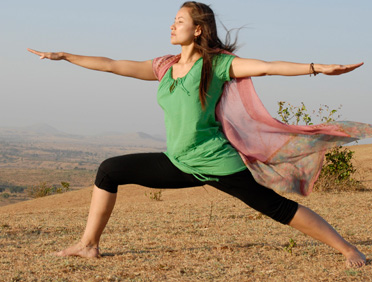
# A Gentle Introduction to Yoga
Yoga has historically been acknowledged as a means to achieve physical health, mental clarity, and spiritual growth. Nonetheless, for many, the thought of yoga can appear daunting or out of reach. Common remarks such as “I can’t do yoga; I’m far too stiff” often surface from those hesitant about trying it for the first time. Yet, yoga is accessible to everyone—regardless of age, size, capability, or flexibility. This guide will familiarize you with yoga basics and clarify prevalent misconceptions.
—
## **The Inflexibility Myth**
A prevalent falsehood is that one must be flexible beforehand to engage in yoga. In truth, flexibility is a *result* of yoga practice, not a necessity. Flexibility emerges over time as yoga integrates gentle stretches with mindful breathing. Yoga isn’t about reaching your toes—it’s about uncovering what your body can achieve today, whether it’s rolling your wrists or transitioning into a dynamic pose like Cat-Cow.
Yoga emphasizes balance, uniting physical strength with flexibility. While gymnasts and experienced practitioners demonstrate remarkable poses, most began just like everyone else—working to discover their balance and range. Flexibility flourishes with dedication and patience.
—
## **Your Purpose for Starting Doesn’t Matter**
Many presume that yoga must carry a profound spiritual significance or motivation, but the reasons for starting yoga can be quite practical. You might embark on yoga to:
– Reduce stress from work or busy lifestyles
– Alleviate back discomfort or tightness in your hamstrings
– Introduce diversity into your workout regimen
– Master specific poses like the lotus or headstand
There’s no incorrect reason to practice yoga. Whether you’re after relaxation, striking a pose for social media, or merely indulging your curiosity, yoga meets you at your current point.
—
## **Universal Flexibility**
Yoga can serve every body type, age group, and level of expertise. For example, if the Cat-Cow pose feels excessive on your wrists, adjustments (e.g., closed fists or sitting in a chair) can simplify it. Whether you’re young or old, recovering from an injury or athletic, overweight or undertrained, yoga provides something for everyone. Even joint movements or breath awareness are part of the practice.
Yoga’s flexibility encourages inclusivity. Tools like straps, blocks, or bolsters can tailor poses to your specific needs, promoting safe and enjoyable participation.
—
## **The Key Principle: Breathe**
Breathing is fundamental in yoga, setting it apart from numerous other physical disciplines. Conscious breathing, or *pranayama*, enhances the bond between body and mind, assisting students in staying present and energized throughout their session. Deep nasal breathing calms the nervous system and fosters relaxation.
It’s common to unintentionally hold your breath during demanding movements or stressful situations (whether at work or in a yoga class). Yoga helps you become aware of your breath and learn to control it, which can alleviate stress and improve overall health.
For a deeper insight into how breathing influences your health, explore the acclaimed book *Breath* (2020) by James Nestor.
—
## **Celebrate Individuality**
One of yoga’s most remarkable qualities is its ability to accommodate individual anatomy, experiences, and preferences. Each practitioner’s body is distinct, with variations in proportions, prior injuries, and genetic traits all influencing how poses are perceived. For instance, taller individuals may find balancing poses simpler, while shorter practitioners may feel more at ease in forward bends.
Refrain from comparing yourself to others, whether in a class or on social media. Your evolution and practice are uniquely yours, and even beginner poses yield benefits. Yoga isn’t about mimicking your instructor’s form—it’s about discovering what resonates in *your* body.
—
## **Yoga Beyond Asanas**
Although contemporary yoga often centers on physical poses (termed *asanas*), its roots lie in a comprehensive approach to spiritual and mental growth. The ancient text, *The Yoga Sutras of Patanjali,* details eight “limbs” or dimensions of yoga, covering morality (*yamas*), personal discipline (*niyamas*), breath work (*pranayama*), and focus (*dharana*).
While many practitioners predominantly concentrate on *asana* (e.g., downward-facing dog or tree pose), there’s always room to deepen your exploration. Concepts such as ethical principles—like kindness (*ahimsa*) or non-possessiveness (*aparigraha*)—can enhance daily life beyond the yoga studio.
—
## **The Modern Yoga Perspective: No Pain, Greater Benefits**
In contrast to the adage “No pain, no gain” prevalent in fitness culture, yoga prioritizes comfort, mindfulness, and awareness. Discomfort signals that it’s time to ease up or adapt a pose. Sharp or stinging pain should never accompany your practice. Yoga acknowledges the body’s boundaries, promoting a safer and more sustainable journey toward wellness.
Instead of pushing through discomfort, yoga encourages you to focus on the sensation of a pose. If